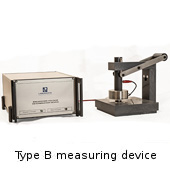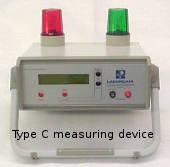|
|
Reflections on the classification of 'electric' FIBCs
| The situation concerning electrostatic charging and discharging of FIBCs is comparable to the dilemma that confronted the industry 25 years ago with regard to permissible safe working loads for FIBCs. At that time there were still no standards for testing and certifying safe working loads, but test houses such as LABORDATA were already in existence which had developed their own internal test methods. At that time in the 1970s this was an acceptable state of affairs. However, as FIBCs began to be more widely used, an urgent need arose to establish standards for the new product. Cooperation between the industry and the few test houses which had already concerned themselves in this matter led to the creation of national and international regulations which are still valid to this day. The well known FIBC categories were introduced in the early `80s for non-dangerous goods. |
They differ in their safety factors (SF): single trip FIBCs (SF 5:1) and two kinds of multitrip FIBCs (SF 6:1 and SF 8:1). Later followed the categories for dangerous goods FIBCs. These differentiations have proved worthwhile and people working with FIBCs would not consider dispensing with them. Astonishingly, electrostatic problems of FIBCs became the focus of attention much later. To this day there are still no obligatory standards dealing with this important matter. This is all the more surprising since the hazard of electrostatic discharge has always been present ever since FIBCs first came on the scene. It is even more surprising that until now there have not been any major electrostatic accidents. This happy state of affairs certainly partly explains why the elaboration of standards for testing and certification of the electric properties of FIBCs were neglected. |
In the absence of obligatory standards, regulations have been developed through a cooperative effort between the industry and certain competent test houses. Meanwhile these regulations are generally recognised although they are not enforceable. As in the field of mechanical properties of FIBCs, so with electrical properties certain categories have been established. These are orientated towards the potential degree of hazard that exists in the areas of the FIBC filling and discharge stations. Hazardous areas are places where an explosive atmosphere is present, or may be expected to be present, in quantities such as to require special precautions for the construction, installation and use of special safety equipment. These area are classified into hazardous zones based upon the frequency of the occurrence and duration of an explosive gas or dust atmosphere (zones 0, 1, 2 and 20, 21 and 22 - see table below). |
| The zones 0, 1 and 2 are places in which an explosive atmosphere consisting of a mixture with air of flammable substances in the form of gas, vapour or mist | |
|---|---|
| is present continuously, for long periods or frequently | zone 0 |
| is likely to occur in normal operation occasionally | zone 1 |
| is not likely to occur in normal operation but, if it does occur, will persist for a short period only | zone 2 |
| The zones 20, 21 and 22 are places in which an explosive atmosphere in the form of a cloud of combustible dust in the air | |
| is present continuously, for long periods or frequently | zone 20 |
| is likely to occur in normal operation occasionally | zone 21 |
| is not likely to occur in normal operation but, if it does occur, will persist for a short period only | zone 22 |
| First there were three types of FIBC (A, B and C) but later a fourth (D) came along. These categories have become well established in people's minds so that everybody coming into contact with FIBCs can deal with them. It therefore makes good sense to embody this experience in future standards. The FIBC types are assigned to the various zones as shown in the table opposite. Naturally many differentiations in categories increase the risks of mistakes and misinterpretations. For this reason, some people are proposing to abandon the electric categories for FIBCs mentioned above and to reduce the gradation radically. |
According to those who advocate this simplification, there should be just two types: FIBCs without electric and those with electric properties. Therefore, logically, all 'electric' FIBCs would need to be designed for maximum demands. The use of such a uniform type would without doubt be an advantage. Such FIBCs could be utilised without special considerations in all hazardous zones where FIBCs are allowed. The measures required by the user for assessing the risk potential at the place of filling or emptying (with regard to selecting the correct FIBC type) would be far more straightforward. | At first glance the idea is appealing. However, when one considers the matter more closely important economic arguments indicate otherwise. All FIBCs would have to be subjected to the same rigorous testing procedure. The expense of testing and certification as well as production costs would rise considerably. In the zones of low danger (which are very much in the majority) the same expensive FIBCs would have to be used as in the zones of highest danger. I am sure that the majority of manufacturers and users would protest vehemently against this economic nonsense. |
| Type A | Normal bags without any electric properties, not suitable to be used for handling combustible dust | zones none |
|---|---|---|
| Type B | Made from normal fabric having a breakdown voltage less than 6 kV | zones 21, 22 |
| Type C | Fabric with interwoven conductive threads being interconnected to all parts of the bag and to an earthing flap with less than 107 ohms | zones 1, 2, 21, 22 |
| Type D | Fabric with a system of conductive fibres and/or special coating, no interconnection between the parts of the bag, no earthing | zones (1), 2, (21), 22 |
| Note: The details in this table have been abbreviated to provide a quick overview. | ||
Comments are welcome and these may be sent by letter to Dr Kielbassa, c/o INDUSTRIAL BULK WORLD, 25 West Cottages, Off West End Lane, London NW6 1RJ, UK. Alternatively, he can be contacted direct (tel: +49 531 33 9011, fax: +49 531 33 9013; email: This email address is being protected from spambots. You need JavaScript enabled to view it.).
(60)










